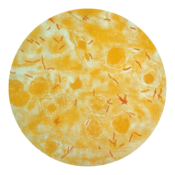Tuberculosis is a communicable chronic disease caused by the organism Mycobacterium tuberculosis.
The disease primarily affects the lungs and causes pulmonary tuberculosis. It can also affect intestine, meninges, bones and joints, lymph glands, skin and other tissues of the body and hence causes secondary tuberculosis.
Anti tuberculosis Drugs:
There are many types of drugs for treating tuberculosis (about 12 or 13 drugs) of which 6 are considered to be essential. An antitubercular drug should satisfy the following criteria:
a) Highly effective
b) Free from side effects
c) Easy to administer
d) Reasonably cheap
The currently used drugs can be classified into two groups:
Bactericidal:
Rifampicin (RMP)
INH
Streptomycin
Pyrazinamide
Bacteriostatic:
Ethambutol
Thioacetazone
Drug resistance:
Drug resistance means that the antituberclosis drugs given during the treatment do not kill certain strains of tuberculosis bacilli. Some strains can be resistant to one or more drugs.
WHO defines a multidrug resistance (MDR) strain as one that is at least resistant to isoniazid and rifampicin.
Drug resistance is caused by inadequate treatment and poor tuberculosis programmes. The most common reasons for the development of resistance are:
a) Incorrect prescription
b) Irregular supply of drugs
c) Noncompliance of treatment
d) Lack of supervision and follow up
WHO in order to combat the problem derived the following conclusions:
DOTS (Directly Observed Treatment, Short-course) is the central element of the Global TB Control Program. This program ensures:
a) Treatment with two or more drugs in combination.
b) Using drugs to which the bacteria are sensitive.
c) Ensuring that the treatment is complete, adequate and regular.
It (DOTS) gained world wide acceptance because:
*It is recognized by the World Bank as one of the most cost-effective of all health interventions and is a highly effective means of treating to cure;
*It substantially curtails the generation...


